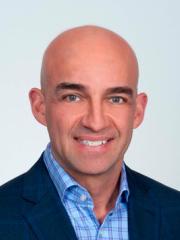#18. Clinical Use Cases and Overview of ASPEN Guidelines
Welcome to this podcast series on Indirect Calorimetry. In this podcast, Dr. Robert Bilkovski will turn our focus from the theoretical to the practical as he discuss energy metabolism and the use of indirect calorimetry.
Show Notes
Transcript
Speakers
In this podcast, the objectives will focus on, first, gaining an understanding of several of the more widely used clinical use cases which includes burn, pediatric and management of the obese patient. Secondly, obtaining a high-level understanding of the ASPEN guidelines and some of their key takeaways.
In this podcast, we will turn our focus from the theoretical to the practical as we discuss energy metabolism and the use of indirect calorimetry.
In this podcast, the objectives will focus on the following:
First, you will gain an understanding of several of the more widely used clinical use cases which includes burn, pediatric and management of the obese patient.
Second, you will obtain a high-level understanding of the ASPEN guidelines and some of their key takeaways.
Let us start off on the clinical use cases where indirect calorimetry has been studied and demonstrated favorable impacts to patient care. The use cases covered include burn patients, the elderly, the obese, pediatrics and closing out with surgical care.
Burn patients, especially those that have sizable body surface areas affected present a challenge to the clinical team for the patient's open wounds cause large fluid shifts, are open sources for infection and result in large metabolic changes. From a nutritional support perspective, the goal is to accurately determine the caloric requirements during this hypermetabolic state and minimize the risk of overfeeding.1
The magnitude and duration of these hypermetabolic changes have been shown to be much greater when compared to trauma or septic patients.
Both Clark and Moreira in their publications state that indirect calorimetry is the gold standard for energy expenditure determination in burn patient care. In addition, indirect calorimetry should be measured daily in order to capture the day-to-day metabolic changes in this patient population that may extend into the recovery phase.1,2
Turning our attention to the elderly, there have been several noteworthy publications on this topic. First, in those aged greater than 65 years with sepsis, a resting energy metabolism was found to be lower than otherwise predicted.3
While six predictive equations were evaluated for accuracy compared to indirect calorimetry, on a whole, these equations had modest performance and were dependent on knowing the fat-free mass of the patient.4
Similarly, in critically ill elderly patients, predictive equations showed limited accuracy when compared to calorimetry.5
Amongst obese patients, authors from the ICALIC Study Group concluded that,
- obese patients constitute a growing population of the ICU patient population;6
- the energy requirements are poorly addressed by predictive equations;6 and
- indirect calorimetry is the only way to determine metabolic requirements with accuracy.6
With a special focus on the pediatric obese patient, Martinez in a 2017 study showed that energy delivery based on predictive equations was 34.6% of estimated, and this patient population, when compared to the non-obese, had increased ICU lengths of stay and mortality.
This implies the importance of greater accuracy in measuring energy requirements and where indirect calorimetry can support and improve patient outcomes.7
Similar to what has been observed in adult patients, the use of predictive equations in critically ill children was also found to be unacceptable in measuring resting energy expenditure across a wide range of caloric needs that spanned 200 to 1000 kilocalories per day.8
In total, 15 predictive equations were tested and the authors concluded that indirect calorimetry is preferred in this population.8
Lastly, Larsen conducted a retrospective analysis of the pediatric ICU patients to determine the incidence of over and under feeding.
In total, only 12.4% of patient measurements of energy expenditure showed that they received appropriate feeding.9
While just over 34% and 53% were either underfed or overfed, respectively.9
The final use case discussed care of the surgical patient.
Indirect calorimetry has been shown to predict adverse outcomes in cardiac surgery patients, where non-survivors had a statistically significantly greater respiratory quotient than survivors. This finding may suggest that a shift to anaerobic metabolism is occurring and portends a poor prognosis. 10
Furthermore, the Caloric Control in Cardiac Surgery Trial showed that malnutrition is common in cardiac surgery patients and the incidence ranges between 10 to 25%.
The malnourished patients had greater in-hospital mortality, increased hospital length of stay, longer duration of vasopressor use, and more frequent positive blood cultures. 11
Amongst polytrauma patients, indirect calorimetry used to measure respiratory quotient showed that the RQ negatively correlated with both ventilator duration and ICU length of stay. This suggests that indirect calorimetry may be useful in optimizing the care of this patient population.12
Let's close out this podcast on the topic of ASPEN guidelines. ASPEN stands for the American Society of Parental and Enteral Nutrition and they have published a series of guidelines on topics related to nutritional support.
Of note, in 2021, the ASPEN guidelines on nutritional support of the adult critically ill patient was most recently updated. While for pediatric critically ill patients, the last edition was published in 2017. 13,14
Regarding guideline recommendations for adults, some of the highlights include:
1 - There were no differences in harms or outcomes between the use of enteral or parenteral feeding in the first week of care;15
2 - There is no clinical outcome improvement in providing supplemental parenteral nutrition during the first week of illness.15
And 3 - One addition, a carryover from 2016 guidelines which is important to restate is that “indirect calorimetry be used to determine energy requirements when available.” 15
In closing, the ASPEN guidelines serve as a valuable resource to guide clinicians on how one can optimize nutritional support practices by leveraging the latest evidence-based medicine.
Our next segment of this podcast series will turn our attention to the more practical aspects of indirect calorimetry, specifically the importance of steady state determination.
References:
- Clark, A., et al. (2017). "Nutrition and metabolism in burn patients." Burns Trauma 5: 11
- Moreira, E., et al. (2018). "Update on metabolism and nutrition therapy in critically ill burn patients." Med Intensiva 42(5): 306-316
- Ebihara, T., et al. (2018). "Low energy expenditure among elderly patients in acute, sepsis." Clinical Nutrition 37: S174.
- Karlsson, M., et al. (2017). "Ability to predict resting energy expenditure with six equations compared to indirect calorimetry in octogenarian men." 92: 52-55.
- Segadilha, N., et al. (2017). "Energy Expenditure in Critically Ill Elderly Patients: Indirect Calorimetry vs Predictive Equations." JPEN J Parenter Enteral Nutr 41(5): 776-784.
- Oshima, T., et al. (2017). "Indirect calorimetry in nutritional therapy. A position paper by the ICALIC study group." Clin Nutr 36(3): 651-662.
- Martinez, E. E., et al. (2017). "Energy and Protein Delivery in Overweight and Obese Children in the Pediatric Intensive Care Unit." Nutr Clin Pract 32(3): 414-419.
- Jotterand Chaparro, C., et al. (2017). "Performance of Predictive Equations Specifically Developed to Estimate Resting Energy Expenditure in Ventilated Critically Ill Children." J Pediatr 184: 220-226.e225.
- Larsen, B. M. K., et al. (2018). "Can energy intake alter clinical and hospital outcomes in PICU?" Clin Nutr ESPEN 24: 41-46.
- Piot, J., et al. (2018). "An elevated respiratory quotient predicts complications after cardiac surgery under extracorporeal circulation: an observational pilot study." J Clin Monit Comput.
- De Waele, E., et al. (2018). "Does the use of indirect calorimetry change outcome in the ICU? Yes it does." Curr Opin Clin Nutr Metab Care 21(2): 126-129.
- Patkova, A., et al. (2018). "Prognostic value of respiratory quotients in severe polytrauma patients with nutritional support." 49: 90-95.
- Compher, C, Bingham, AL, McCall, M, et al. Guidelines for the provision of nutrition support therapy in the adult critically ill patient: The American Society for Parenteral and Enteral Nutrition. J Parenter Enteral Nutr. 2022; 46: 12– 41
- Mehta, N.M., Skillman, H.E., Irving, S.Y., Coss-Bu, J.A., Vermilyea, S., Farrington, E.A., McKeever, L., Hall, A.M., Goday, P.S. and Braunschweig, C. (2017), Guidelines for the Provision and Assessment of Nutrition Support Therapy in the Pediatric Critically Ill Patient: Society of Critical Care Medicine and American Society for Parenteral and Enteral Nutrition. Journal of Parenteral and Enteral Nutrition, 41: 706-742.
- Taylor, B. E., et al. (2016). "Guidelines for the Provision and Assessment of Nutrition Support Therapy in the Adult Critically Ill Patient: Society of Critical Care Medicine (SCCM) and American Society for Parenteral and Enteral Nutrition (A.S.P.E.N.)." Crit Care Med 44(2): 390-438

Dr. Robert N. Bilkovski, MD, MBA
President, RNB Ventures Consulting Inc.
Dr. Bilkovski has broad management experience, having served in leadership roles in multiple Fortune 500 companies overseeing medical affairs and clinical development in IVD, medical device, and pharmaceuticals industries. Some of the companies where he served in leadership roles include Hospira, GE HealthCare, Abbott Laboratories, and Becton Dickinson. Robert currently is the President of RNB Ventures Consulting Inc. providing strategic consulting in the field of medical and clinical affairs for medical device and diagnostic companies.
Dr. Bilkovski received his undergraduate degree in biochemistry with a focus in genetic engineering at McMaster University in Hamilton, Ontario, Canada. Robert completed his medical training at Rosalind Franklin University/The Chicago Medical School and subsequently pursued specialization in emergency medicine. Lastly, Dr. Bilkovski earned his MBA at the University of Notre Dame as part of his transition from clinical medicine to medical industry.













